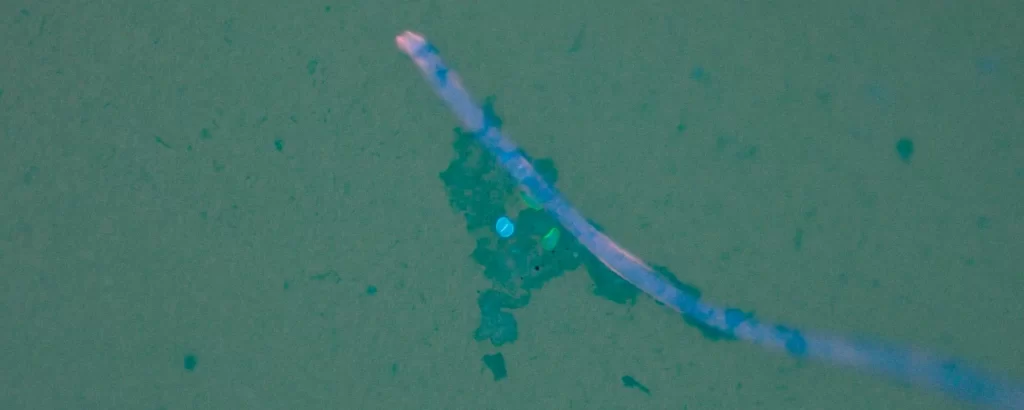Laboratory experiments find that Toxoplasma, Cryptosporidium, and Giardia can congregate on microplastic beads and fibers, suggesting they might make their way into and around the world’s oceans by hitching rides on tiny bits of trash.
Tiny pieces of plastic can ferry around fecal pathogens in saltwater, researchers report today (April 26) in Scientific Reports, suggesting that plastic pollution may play a role in the marine transmission of terrestrial parasites. The findings point to a novel potential danger of microplastics, whose effects have proven difficult to assess.
“The intersection of microplastics and three serious [parasites] in seawater should raise red flags for everyone from beachgoers to wildlife conservationists,” University of Hawai‘i marine mammal physiological ecologist Mary Donahue, who wasn’t involved in the work, tells New Scientist.
Experts have long expressed concern about the rising abundance of plastics in the environment. Iconic images of sea creatures wrapped in soda can rings or with straws protruding from their nostrils have sounded the alarm on macroplastics, but even more prevalent are microplastics—the tiny pieces less than 5 mm in diameter that result from the breakdown of larger chunks or are shed from synthetic fabrics—the health effects of which remain unclear.
The new study experimentally combined three feces-vectored pathogens (Toxoplasma gondii, Cryptosporidium parvum, and Giardia enterica) with two kinds of microplastics (microbeads and microfibers) in seawater to determine if the disease-causing agents could stick to and live on the particles. They did, leading to orders of magnitude higher concentrations of pathogens per gram of plastic than per milliliter (roughly a gram) of the surrounding seawater.
As microplastics have been found in seafood species, the authors suggest that microplastics may be a previously unknown way for pathogens to get inside marine species, where they can cause illnesses in the animals themselves or in humans that consume them. Indeed, the researchers write that they chose the three pathogen species used in their study because the World Health Organization identified them as underestimated causes of illness from shellfish consumption in 2010.
“It’s easy for people to dismiss plastic problems as something that doesn’t matter for them, like, ‘I’m not a turtle in the ocean; I won’t choke on this thing,’” says Karen Shapiro, a University of California, Davis, School of Veterinary Medicine infectious disease researcher and coauthor on the paper, in a press release. “But once you start talking about disease and health, there’s more power to implement change. Microplastics can actually move germs around, and these germs end up in our water and our food.”
New Scientist reports that the researchers now seek to determine if these pathogen-coated plastics can make it across oceans and remain infectious.
Related article:
Man drinks a dysentery smoothie to help develop a vaccine, has a really bad time
Revealing The Sex Of A Baby Before Birth Can Benefit Health, Mouse Studies Suggest












